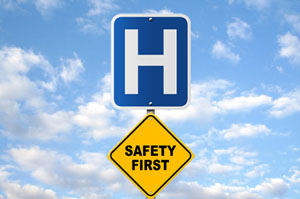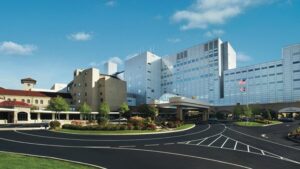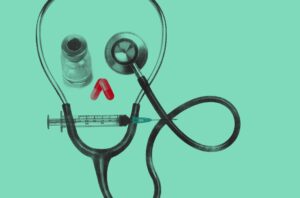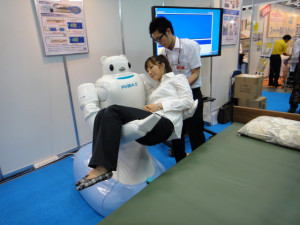Ensuring Your Hospital is Safe and Sound

When it comes to creating an optimal environment for healing, it is not just patient health that is important, it is also making sure your hospital is ‘safe and sound’. Ensuring your employees are working under healthy conditions is of critical importance. You need not ‘reinvent the wheel’, adjustments can be made that are easy to implement. In fact, taking care of the basics, such as, ensuring that there is enough staff rotation and sufficient staffing volume, makes all the difference.
Creating a culture of safety is important. Rosemary Sokos, MD, MOH and Chair of the Department of Human Science, Georgetown University School of Nursing and Health Studies, recommends that all hospitals establish an “overarching people safety principle”. This has shown to have a positive impact on any hospitals culture of health and safety.
Trust and respect are two vital pieces of the ‘jigsaw puzzle’ when it comes to establishing a relationship between staff and leadership when it comes to safety issues. The second principle, trust, is to ensure that all staff are involved. It is critical that a culture of safety includes a hospitals frontline workers, and even the canteen staff. For this culture of safety to be successful, staff need to feel respected, rather than staff being afraid of punishment when reporting “near misses or failures” to management.(https://www.jcrinc.com/assets/1/7/ECNews-June-2013.pdf)
Culture of Safety in Action

One good example of a case study of a hospital that has developed a strong culture of safety is the Good Samaritan Hospital of Dayton, Ohio. … And it only took a couple of people to make this change happen…
The VP of Clinical Effectiveness and Performance Improvement, along with the Director of the hospital’s Center of Outcomes, Research and Clinical effectiveness of GSG; took the first steps to facilitate change. These initial progressive steps totally transformed the culture of the Good Samaritan Hospital… “So how did they do this?”
They first arranged one-on-one group dialogues with hospital leadership showing the important potential of a patient safety program. Hospital leaders caught on to this idea and a new “safety-reliable organization” was born. To do this a safety board was introduced composed of physicians, nurses and other medical professionals. This safety board was integrated into the organizational framework.

The boards’ responsibilities included: medical management, quality management and risk management. Patient safety was elevated to a leadership priority, so was developing a non-punitive culture. It was important to ensure that staff were at ease reporting medical errors or near misses. Before long this new ‘safety culture’ rapidly spread throughout this healthcare organization.
Some of the new benchmarks also developed included (reviewed bi-monthly):
- Educational workshops for all hospital staff focusing on sentinel events, incident reporting, root cause analysis, and the roles of all health care teams in patient safety.
- Introducing an incident and near miss reporting system, supported by automated database software to enable tracking, analysis of incident data and aggregation.
(“7 Creating and Sustaining a Culture of Safety.” Institute of Medicine 2004. Keeping Patients Safe: Transforming the Work Environment of Nurses. Washington, DV: The National Academies Press. Doi 10.17226 / 10851)
The outcome of creating this new safety orientated culture for Good Samaritan has been extremely positive. There was a significant increase in reported errors that led to system improvements. This increased rate of reporting resulted in reducing the cost of care provision.
Another cost effective measure is ensuring that your hospital is well equipped with technology that is designed to increased patient and employee safety.
Technology Which Facilitates Patient and Employee Safety
The good news for hospitals and medical facilities is that workers injuries are decreasing. But, despite this, according to Becker’s Hospital Review, “nursing has the highest rate of nonfatal occupational injuries, according to the US Bureau of Lab Statistics.” (https://www.beckershospitalreview.com/human-capital-and-risk/4-statistics-on-nurse-workplace-injuries.html)

One option to keep occupational injuries low is the cutting edge RIBA (Robot for Interactive Body Assistance). This technology is developed by RIKEN and Tokai Rubber Industries and HAL (Hybrid Assistive Limb) robot suits distributed by Cyberdyne (not that Cyberdyne, lol).
RIBA is the first robot of its kind to transport a patient from a wheelchair or a bed. This is accomplished by using its robust arms and via innovative guidance methods employing high-accuracy tactile sensors. This cutting edge technology was created by combining RIKEN’S control sensor with information processing, material, and structural design technologies made by TRI. Innovations such as these have the potential to reduce the risk of injury by nurses and other healthcare workers.
In the latest research conducted by Dr. Elena De Momi and her team from Politecnico di Milano ‘taught’ a robot how to mimic the natural human actions of a surgeon. The aim of this research was to show how both human beings and robots can work together during emergency situations such as surgeries.
To carry out this experiment De Momi’s team took photographs of a human being performing successive reaching actions. These motions were similar to the way a surgeon uses surgical instruments. These “camera captures” were keyed into the neural network of the robotic arm, key for dictating movements. The second stage of this experiment, involved one of the team steering a robotic arm which simulated the reaching motions that were performed in the earlier stage. Despite their not being a perfect match between robotic and human motions, “they were broadly similar”. (https://blog.frontiersin.org/2016/09/29/your-next-nurse-could-be-a-robot/)
The final stage involved observers that decided whether the actions of the robotic arms were “biologically inspired,” suggesting that neural networks had successfully learnt how to mimic human behavior. It was found that “about 70% of the time this is exactly what the human observers concluded”.
Dr. Elana De Momi explains that “As a roboticist, I am convinced that robotic (co)workers and collaborators will definitely change the work market, but they won’t steal job opportunities. They will just allow us to decrease workload and achieve better performances in several tasks, from medicine to industrial applications,” (https://blog.frontiersin.org/2016/09/29/your-next-nurse-could-be-a-robot/)
Increasing Safety by Introducing Simple Initiatives
For any hospital, developing a culture of safety is crucial for both staff and their patients. Rather, than being exclusive, this culture of safety needs input from all levels of a healthcare organization; from C Level to those in the field. It is also critical to develop a culture where staff can report medical errors without fear of punishment. As shown by the Good Samaritan Hospital, this has great benefits for an entire health organization. Hospitals also need to keep up to date on technologies such as the RIBA that potentially can cut down on nurse lifting injuries. Early research by Dr. Elena De Momi and her team has shown that combining both human expertise and innovative robotics has the future implications for minimizing worker fatigue and reducing human error.
